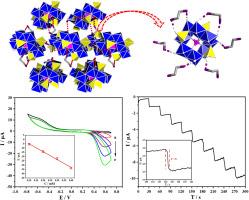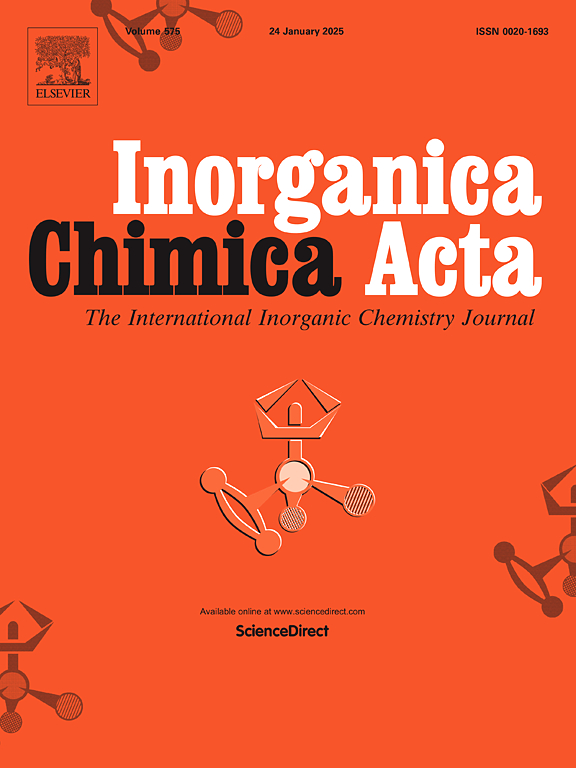A new 3D arsenomolybdate-based organic-inorganic hybrid with the electrochemical sensing of ascorbic acid
IF 3.2
3区 化学
Q2 CHEMISTRY, INORGANIC & NUCLEAR
引用次数: 0
Abstract
The design and preparation of efficient polyoxometalate-based electrocatalytic materials present a viable approach to achieve sensitive electrochemical sensing of ascorbic acid (AA). Herein, we report the synthesis of a novel organic-inorganic hybrid compound, H(H2en)3[AsMo8V4O40]·11H2O (1) (en = ethylenediamine), via a facile one-pot self-assembly method. Single-crystal X-ray diffraction analyses show that hybrid 1 features a three-dimensional (3D) supramolecular architecture, where arsenomolybdate [AsMo8V4O40]7− clusters are interconnected through hydrogen bonding interactions with protonated [H2en]2+ cations. Electrochemical analyses verified the excellent electrocatalytic activity of hybrid 1 toward AA oxidation. When utilizing hybrid 1 as an electrode material, the developed electrode exhibited superior analytical performance for detecting AA. It featured a wide linear detection range from 30 to 270 μM, a high sensitivity of 0.044 μA·μM−1, a low detection limit of 6.78 μM, and favorable selectivity and stability.

具有抗坏血酸电化学传感的新型三维砷钼酸盐基有机-无机杂化物
设计和制备高效的多金属氧酸盐基电催化材料为实现抗坏血酸(AA)的电化学敏感提供了一条可行的途径。本文报道了一种新型的有机-无机杂化化合物H(H2en)3[AsMo8V4O40]·11H2O (1) (en =乙二胺),通过一锅自组装方法合成。单晶x射线衍射分析表明,杂化物1具有三维(3D)超分子结构,其中砷钼酸盐[AsMo8V4O40]7−簇通过与质子化[h2]2+阳离子的氢键相互作用相互连接。电化学分析证实了杂化1对AA氧化具有良好的电催化活性。当使用杂化1作为电极材料时,所开发的电极在检测AA方面表现出优异的分析性能。该方法具有30 ~ 270 μM的宽线性检测范围、0.044 μA·μM−1的高灵敏度、6.78 μM的低检出限、良好的选择性和稳定性。
本文章由计算机程序翻译,如有差异,请以英文原文为准。
求助全文
约1分钟内获得全文
求助全文
来源期刊

Inorganica Chimica Acta
化学-无机化学与核化学
CiteScore
6.00
自引率
3.60%
发文量
440
审稿时长
35 days
期刊介绍:
Inorganica Chimica Acta is an established international forum for all aspects of advanced Inorganic Chemistry. Original papers of high scientific level and interest are published in the form of Articles and Reviews.
Topics covered include:
• chemistry of the main group elements and the d- and f-block metals, including the synthesis, characterization and reactivity of coordination, organometallic, biomimetic, supramolecular coordination compounds, including associated computational studies;
• synthesis, physico-chemical properties, applications of molecule-based nano-scaled clusters and nanomaterials designed using the principles of coordination chemistry, as well as coordination polymers (CPs), metal-organic frameworks (MOFs), metal-organic polyhedra (MPOs);
• reaction mechanisms and physico-chemical investigations computational studies of metalloenzymes and their models;
• applications of inorganic compounds, metallodrugs and molecule-based materials.
Papers composed primarily of structural reports will typically not be considered for publication.
 求助内容:
求助内容: 应助结果提醒方式:
应助结果提醒方式:


